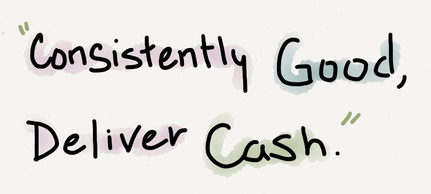
The discussion was going to be easy. Two facilities, in the same company, making nearly identical products (to a non-techie like me), with nearly identical mission statements. It didn't turn out that way.
Chemical Plant #1
Just a few months earlier the site leader of the Mississippi chemical plant had worked hard to craft the perfect "purpose statement". The single set of words to describe to his associates just what was expected from every person, every work process, and every delivery. "to deliver products that give our customers and shareholders a competitive edge". He could explain this well. It wasn't good enough to make product to a range of specifications..."every delivered product had to meet the current competitive needs of our customers... and we had to do so in a way that gave our shareholders and 'investment' edge." That meant constant communication with customers and the market. Constant sharing of information with everyone in the organization. Constant checking and changing to see that "the edge" was delivered. Every person discussed how they were going to deliver 'Competitive edge" results to the next person or group in the chain.. Promises had been made to the market and investors on their behalf - it was up to them to deliver. The words were just a fraction of the work... but they made everything else easier because everyone knew how success would be measured.
Sister Plant #2
Now, in the Georgia facility, the discussion was different. "Competitive?...we just need to be consistent!". This plant manager explained that his customers were furious at the wild fluctuations in his facility's performance. It had a bad track record. It also was in trouble with corporate leadership and investors... the same wild swings in performance made them a bad bet. Our discussion was difficult, we could not copy the purpose statement of the sister facility in Mississippi - it would be sometime before this facility was producing a "competitive edge" product. And then it came: "Consistently good. Deliver cash." People had to understand that both statements defined the purpose of all actions. We then set about putting a system in place to help people understand how important these two points of purpose were to the survival of the business and how to assess if they were winning or losing each day to their purpose. Within 60 days the people responded with a 12% increase in product and such a large reduction in rejected material they were embarrassed to make the comparison. For the first time in a long time they had something to be proud of, something to brag about. Excellence was still in the future but for now they had achieved good.
The lessons learned were interesting
- Purpose statements are translations of expectations. They may change as expectations change.
- When people understand they have a unique purpose they respond uniquely.
- Well thought out, clearly stated, and repeatedly discussed - purpose statements make the work of change much easier.
- On the way to great, you have to first be good.

 RSS Feed
RSS Feed